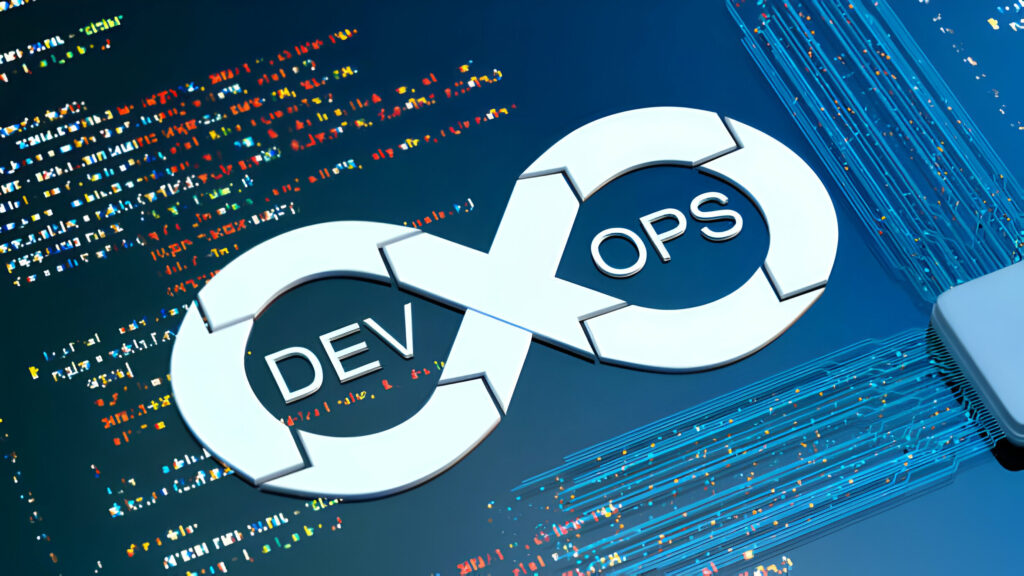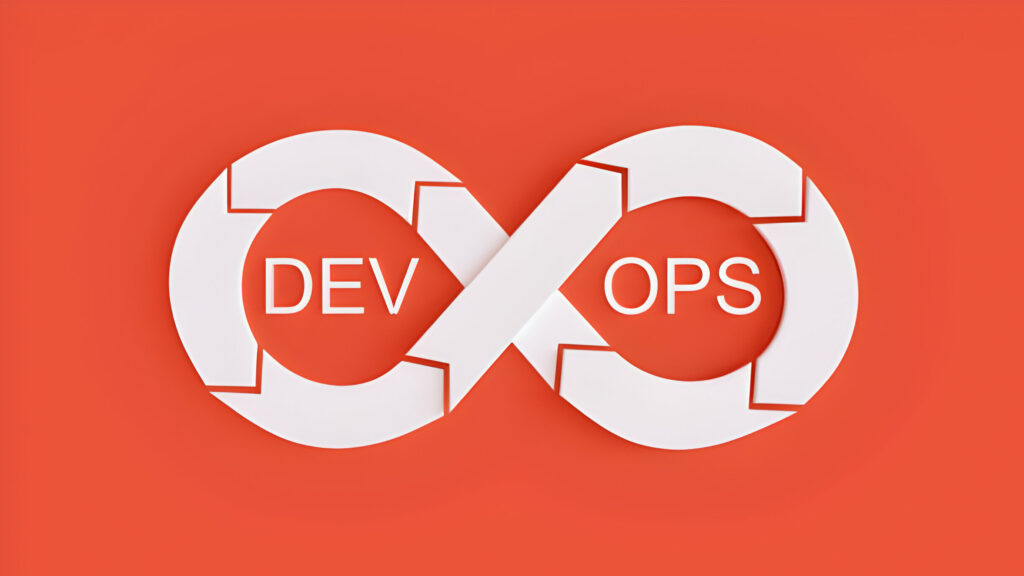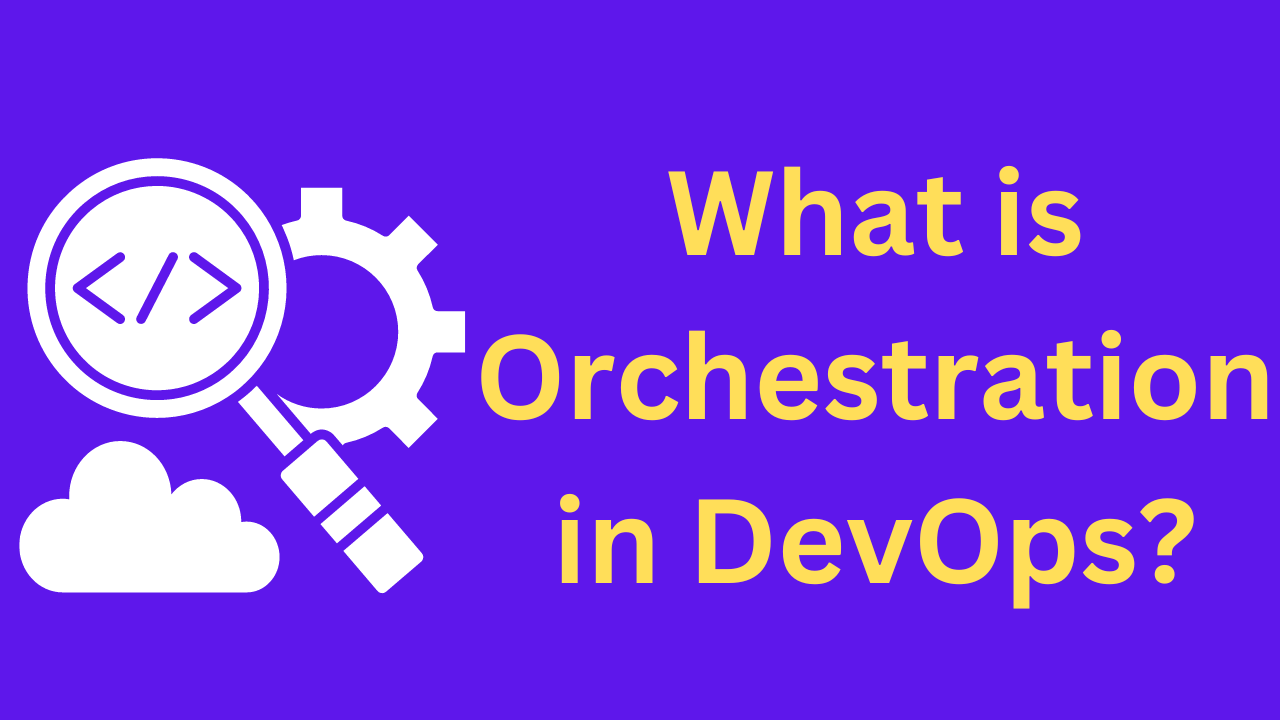Introduction
What is Orchestration in DevOps? In the evolving world of software development DevOps has emerged as a groundbreaking approach to bridge the gap, between development and operations teams. At its core DevOps emphasizes collaboration, automation and continuous delivery.
However with the increasing complexity of applications orchestration has become an element of the DevOps toolkit.
In the realm of DevOps orchestration refers to automating the coordination of tasks across systems and tools to streamline the software development lifecycle.
By managing workflows, infrastructure provisioning and application deployments orchestration empowers teams to deliver software faster with reliability and scalability. In this guide we will delve into the intricacies of orchestration in DevOps.
Exploring its advantages and challenges. While providing insights, on effective implementation within your organization.
What is Orchestration?

What is Orchestration in DevOps? Orchestration refers to the automation of processes and tasks, across an organizations technology infrastructure. It involves coordinating workflows and integrating tools and systems to work together seamlessly.
In the realm of DevOps orchestration plays a role, in streamlining the software development lifecycle starting from planning and coding to building, testing, deploying and monitoring applications. By automating tasks and standardizing processes orchestration enables DevOps teams to enhance efficiency, reliability and scalability.
Some key benefits of orchestration in DevOps include:
- Increased speed and agility: Orchestration accelerates software delivery cycles by automating manual, time-consuming tasks.
- Improved consistency: Standardized, automated workflows reduce human error and ensure processes are executed consistently.
- Greater scalability: Orchestrated systems can automatically scale resources up or down based on demand.
- Enhanced collaboration: Orchestration fosters collaboration by integrating toolchains across planning, development, and operations.
- In summary, orchestration is the glue that holds DevOps together. It automates and unifies development, deployment, and operational processes, enabling organizations to innovate faster and more efficiently in today’s rapidly evolving landscape.
Types of Orchestration in DevOps
There are several key types of orchestration within a typical DevOps environment:
Infrastructure Orchestration involves automating the setup, configuration and management of the components of an IT infrastructure, such, as servers, networks, storage systems and databases. Known tools for infrastructure orchestration include Terraform, Ansible, Puppet and Chef.
These tools enable DevOps teams to swiftly create or remove resources on cloud platforms like AWS, Azure or GCP. The advantages include speed, increased scalability and consistent infrastructure deployment.
Application Orchestration focuses on deploying, scaling and managing applications and services across infrastructure components.
Tools such as Kubernetes, Docker Swarm and AWS ECS/EKS are used to coordinate the orchestration of containerized applications.
They handle tasks like rolling updates/rollbacks of software versions load balancing for distributing traffic across servers or instances automatic scaling based on demand fluctuations self healing capabilities to recover from failures automatically among features in a manner that is not tied to any specific programming language or platform.
Application orchestration empowers DevOps teams to effectively handle environments with distributed applications.
Pipeline Orchestration (also known as CI/CD orchestration) automates the software delivery pipeline starting from code commits through production deployment.
Tools like Jenkins, GitLab CI, CircleCI and GitHub Actions seamlessly integrate with source control systems (Git) artifact repositories or registries (e.g., Maven) testing frameworks (e.g., JUnit) and underlying infrastructure to build, test, scan and release software through a defined workflow.
Pipeline orchestration plays a role in implementing DevOps practices such, as continuous integration (CI),continuous delivery (CD) and continuous deployment.
All these various components of orchestration work together to make operations smoother, throughout the DevOps lifecycle. By combining them we can achieve improvements, in efficiency, reliability and scalability compared to processes. However implementing orchestration requires planning, appropriate tools, skilled team members and vigilant monitoring. When done orchestration enables DevOps teams to speed up innovation.
Popular DevOps orchestration tools

Kubernetes has become the accepted standard, for managing container orchestration. It automates the process of deploying, scaling and maintaining applications that are containerized.
It offers features such as load balancing, self repairing capabilities, automated rollouts/rollbacks and horizontal scalability. Kubernetes is particularly well suited for handling microservices based applications across cloud environments.
Ansible is an open source tool used for orchestrating infrastructure and applications. Of relying on custom scripting it utilizes configuration files to define essential infrastructure resources like cloud instances networking setups, storage configurations and more.
The agentless architecture of Ansible makes it user friendly and easily scalable. Popular use cases include configuration management, application deployment, intra service orchestration and many others.
Jenkins is a leading software automation tool that streamlines the delivery pipelines in software development processes. With its architecture Jenkins seamlessly integrates with numerous tools including version control systems, cloud platforms, build/test tools, artifact repositories.
You name it! Key functionalities include integration/delivery workflows, pipeline as code approachability, distributed builds and plugins available for all languages/frameworks. Organizations often rely on Jenkins as a hub to effectively manage their CI/CD processes.
Terraform brings about infrastructure as code capabilities by enabling provisioning and management of cloud resources such, as servers,databases and load balancers.
It offers integrations, for cloud platforms like AWS, Azure, GCP, OpenStack and more. Terraforms configuration files use an approach to define the structure of infrastructure allowing it to create, update or remove resources as needed. The advantages of using Terraform include improved efficiency, scalability and the ability to reproduce infrastructure environments.
These DevOps orchestration tools mentioned are widely used in the industry. Selecting the tools depends on factors such, as an organizations specific infrastructure, applications, processes and expertise. Many organizations opt to combine tools to meet their orchestration requirements.
Implementing orchestration in DevOps
Implementing orchestration, in DevOps requires planning and execution. The first step involves assessing the business needs and requirements of your organization.
Which processes should be automated? What systems need to be integrated? How do you define success? Defining goals will help guide the orchestration strategy.
The next crucial task is selecting the orchestration tools and technologies. This decision depends on factors such as existing infrastructure, applications, skillsets and budgets.
Evaluate options based on their features, integrations, complexity, scalability, community support and pricing models. It’s also important to get buy in from all teams involved.
Once the tools are chosen it’s time to start building orchestration workflows and pipelines. Break down processes into tasks identify dependencies, configure settings write code and implement security measures and access controls. Thorough testing is essential before automating any processes.
The final step involves monitoring and managing systems. Observability tools provide visibility into end to end workflows. Real time tracking of metrics like build/test pass rates, lead times deployment frequency helps identify bottlenecks.
Automate issue. Establish runbooks for resolving problems. Continuously gather feedback from teams to improve processes further.
Remember that orchestration is a journey, than a one time implementation.
As applications and business requirements change over time it is important to assess and improve the orchestration strategy. This should be done with the goal of optimizing speed and efficiency gains. When implemented orchestration allows DevOps teams to revolutionize their approach, to software development and delivery.
Best practices for orchestration in DevOps
While automation through orchestration provides immense benefits, it’s important to maintain human oversight and control. Orchestration should enhance productivity, not completely replace manual processes and decision making. Teams need the ability to intervene and make changes as required.
Implementing consistent standards and configurations across environments is also a key best practice. Standardization reduces complexity and minimizes differences between dev, test, staging and production deployments. Infrastructure as code and declarative pipeline definitions help enforce consistency.
Thorough testing at every stage before automating processes is critical. Orchestration workflows tend to have many interdependencies, so a failure in one step can have cascading impacts. Rigorously validate each task in isolation and end-to-end to prevent production disruptions.
Always have detailed rollback plans in place. Orchestrated systems execute changes rapidly, so issues can quickly spiral out of control. Teams must be able to easily disable or unwind orchestration processes when failures occur. Version control and immutable infrastructure principles facilitate rollbacks.
Other important best practices include assigning clear ownership and access controls, maintaining audit logs, regularly backing up configuration files, and upskilling teams on orchestration tools and principles. Effective monitoring and measurement of critical metrics should also drive continuous process improvement.
Orchestration is a powerful force multiplier, but it requires forethought, diligence and mature operations practices. By following orchestration best practices, DevOps teams can realize the full benefits of automation without sacrificing quality, security or reliability.
Key benefits and challenges of orchestration in DevOps
The benefits of orchestration are numerous and can have a transformative impact on software delivery. Perhaps the biggest advantage is drastically increased velocity.
Automating manual tasks and standardizing processes enables DevOps teams to rapidly build, test, deploy and manage applications and infrastructure. This helps organizations innovate and respond to market needs faster.
Orchestration also leads to reduced errors and greater reliability of systems. Human mistakes during repetitive tasks are a major source of issues. Automating with defined workflows and enforcing consistency minimizes these errors. Self-service capabilities and self-healing technologies like auto-scaling further improve system stability.
Scalability is another key benefit. Orchestration tools make it much easier to programmatically provision, configure and manage infrastructure and application resources.
Teams can seamlessly scale environments up or down based on fluctuating demands, while maintaining control.
However, implementing effective orchestration presents some challenges as well. The main obstacle is the increased complexity of integrating and managing automated systems across disparate tools and environments. A breakdown in one component can have cascading impacts across workflows.
Skills gaps in areas like configuration management, infrastructure-as-code, CI/CD pipelines and scripting/programming require training initiatives to uplevel teams. Security is also a concern as orchestrated systems expand the attack surface and introduce new vulnerabilities.
Clear governance policies, role-based access controls, audit logs and oversight mechanisms must be implemented. Teams also require mature change management practices to make controlled updates across orchestrated systems.
Overall, while challenges exist, the immense gains to efficiency, speed, scalability and reliability make orchestration a game-changing investment for organizations serious about DevOps transformations.
Conclusion on What is Orchestration in DevOps?
In today’s fast-paced digital world, orchestration has become a critical component of the DevOps toolkit. By automating complex workflows and integrating disparate systems, orchestration empowers teams to streamline the software development lifecycle and deliver value faster.
Throughout this comprehensive guide, we explored the key concepts, types, tools, and best practices for orchestration in DevOps. We learned how infrastructure orchestration automates the provisioning and management of underlying resources, while application orchestration handles deployment, scaling, and operations of apps. CI/CD pipeline orchestration ties everything together for an end-to-end automated software factory.
While orchestration provides immense benefits like increased efficiency, reliability, and scalability, it also introduces challenges. These include added complexity, skills gaps, and expanded security risks that require robust governance and oversight. However, when implemented thoughtfully, orchestration transforms how software is built and run.
For organizations looking to thrive in the new era of software delivery, mastering orchestration is a must. This guide equips you with the knowledge to harness the full power of automation and propel your DevOps success. From faster time-to-market to greater engineering productivity, fully orchestrated workflows are key to driving innovation.
External Resources –

